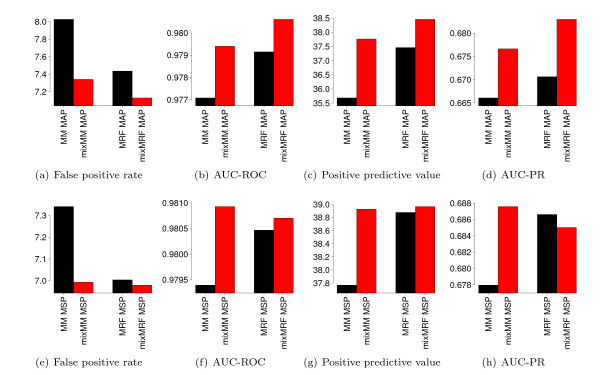Figure 3.
Comparison of different generatively and discriminatively trained models. We compare the classification performance of Markov models (MM), mixtures of Markov models (mixMM), Markov random fields (MRF), and mixtures of Markov random fields (mixMRF) for a set of donor splice sites [5] using the MAP and the MSP principle, and using the derived prior for all models. We plot the four performance measures false positive rate, area under the ROC curve (AUC-ROC), positive predictive value, and area under the precision-recall curve (AUC-PR) for each of the four models. For the MAP principle (a-d), the comparison shows that mixMM and mixMRF yield a higher classification performance than MM and MRF, respectively, and that mixMRF achieves the highest classification performance of all models with respect to all four performance measures. For the MSP principle (e-h), the comparison shows that mixMM and mixMRF yield a higher classification performance than MM and MRF, respectively, and that mixMRF achieves the highest classification performance of all models with respect to false positive rate and positive predictive value, whereas the highest AUC-PR and AUC-ROC are achieved by mixMM.

